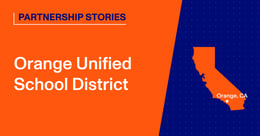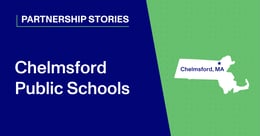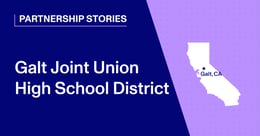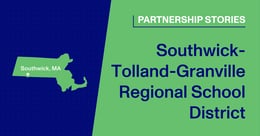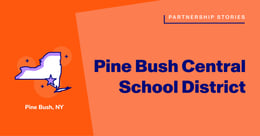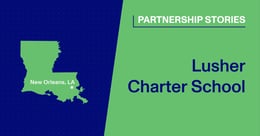
In a Remote Reality, This Denver Principal is Prioritizing Constant Touchpoints for Students
When featuring leaders from partner schools in this interview series, we tend to ask our interviewees what drew them to Paper. In the case of Tiffany Almon, Principal of John F. Kennedy High School (JFK), it is actually more pertinent to cover what drew the Paper Team to reach out to Tiffany.
As we began providing tutoring support to a high school in Denver Public Schools, Colorado, our team started looking up neighbouring principals who would also find our platform useful for their students and teachers. That’s how one of us landed on Tiffany Almon's biography on the JFK website:
“Tiffany values community, integrity, family, communication, and equitable education for all,” it read.
It was a humanizing account of everything from her values and achievements as an educator, as well as her personal passions and interests. It couldn’t have aligned more with the ethos of the Paper team. Here was a principal we were sure we wanted to work with.
In February, she saw Paper's ESS in action. She talked to us about wanting to find a scalable tutoring intervention for her school. “I saw the platform, and I was impressed,” recalled Principal Almon. “But then, COVID-19 hit.” Like every other educator on the planet, the entire nature of her profession had changed, and she got busy adjusting to the new normal. So did we.
Months later, ultimately, Tiffany’s team decided to enter a school-wide partnership with Paper, allowing 882 students entering a very stressful school year to have unlimited, 24/7, multilingual academic support at their fingertips.
Watch Principal Almon explain why students need for constant touchpoints for support through Paper:
How will this year be different from spring’s emergency remote learning?
"We surveyed our community at the end of last school year—our staff, students, families—and so did our district. And what we learned was that although the pandemic has greatly affected the lives of our families, and our students are experiencing grief and trauma, they still want a set schedule for learning to continue," she said.
A big difference from spring will be live, synchronous learning. They'll be back on a daily schedule along with opportunities for asynchronous learning as well. “We’re utilizing intentional ed tech tools that increase online engagement for our students, in addition to Paper’s online tutoring resource.”
“So with the fact that our students are in IB programming, and there is an IB assessment at the end of the spring."
We feel that Paper and some other platforms are a way for our students to get constant touchpoints and support no matter what time of day it is or the different courses that they've been enrolled in.
Paper is part of a variety of programs meant to mitigate learning losses from spring, such as a unit internalization process, as well as just-in-time diagnostics and interventions from the district.
To make sure students make the most of this learning resource, her team is planning ways to implement Positive Behavior Interventions and Supports (PBIS) incentives to embed Paper into students’ learning toolkit.
[Our students] were contacting our teachers 24/7, and they were getting very frustrated when our teachers would not email them back immediately. Our students' hours have changed; they're up at 2 a.m. working on homework, working on classwork. And they just need to have a reliable source that is content-based so that they can ask questions and get feedback with any of their academic concerns. So that last piece is what I think is most powerful about Paper.
“Another huge shift for us is—and this is why I think Paper’s going to be a huge asset to our school, especially our IB students—is we’re going into a semester block, which means we are offering four different courses per semester that will be finished each semester. Having eight classes a semester, which is what students had to worry about in spring, was really tough. Juggling eight different teachers, different assignments, different meeting links, different Schoology pages—what a nightmare.”
“So this year, you would have 1st to 4th period in the first semester, and your 5th to 8th periods next semester.” And there’s one big barrier to the semester block schedule, Tiffany added. “So this fall, you could actually have both English and Math periods, and not have those again next spring. And we know that there’s already the summer slide, and now our summer slide might be that much longer by essentially being extended by a semester.”
To equip teachers for the new school year, they did multiple PDs for teachers on how to instruct and engage students in a remote environment. “So everything from utilizing our learning management system to creating discussions, to using Google Meet to organize breakout sessions, setting what norms are needed (e.g. the no-nonsense nurture model) in the remote world, how to build student-teacher relationships remotely—everything. Then, once a month, we’re also going to have a staff wellness session.”
As a principal in 2020, Tiffany sees how everything in her school community is moving a million miles an hour.
“I’m in collaboration with a high school principal network in my district. But things are moving fast, and each school is different in its own way, so it’s more of an email network than anything else. And my regional instructional superintendent is very supportive—she’s great with accountability and consistency. And then I have my administrative team, and I would say that my administrative team is like my family and main support through all of this.”

